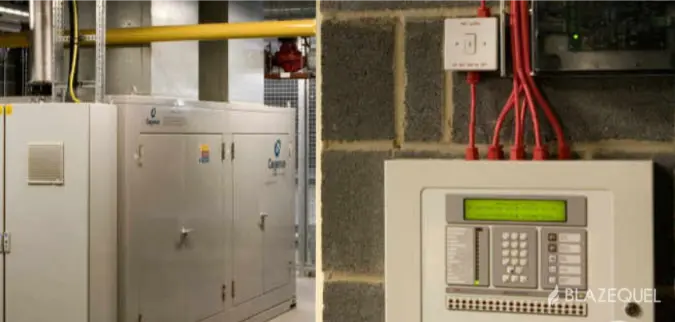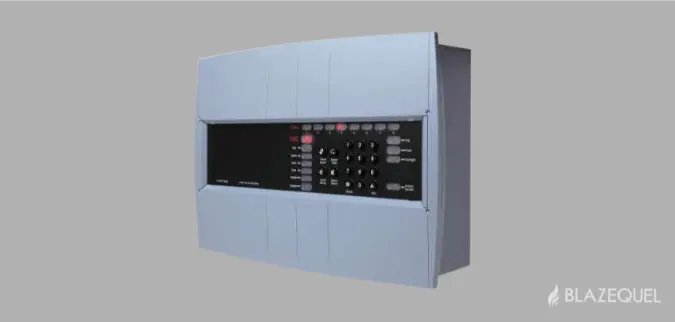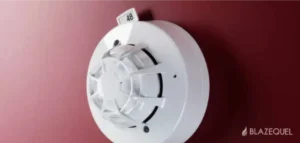
Connect your fire alarm to the ‘Cloud’
Fire Alarm Remote Notification App, for viewing alarms and messages remotely and conducting weekly tests.
Fire Alarms are essential for the protection of life and property, so you need to have a BAFE Approved fire alarm partner you can trust. Whether you need a brand new system or just a simple maintenance contract, contact us today and we’ll be glad to help!
Home / Fire Detection and Alarm Systems / Fire Alarm Systems
Fire alarm systems is a large subject covering all types of scenario and careful consideration needs to be taken in the design stage as to what type of detection is appropriate to the environment. Traditional point smoke and heat detection are the most common form of detection used in a fire alarm, along with the manual call points.
In specific areas, it is appropriate to use air sampling systems or high sensitivity smoke detection systems, or video fire detection. Also, consideration needs to be in as to whether an area needs to be intrinsically safe to avoid any risk of sparks in high explosive areas. Fundamentally with fire alarm design, it is important that the category of fire alarm is defined by the fire risk assessment.
It is the responsibility of the Fire Risk Assessor to define what category of fire alarm is required.
There are several categories. Usually, the purpose of a fire alarm is to protect life, which is the viewpoint of HSE and legislation, and there are categories 1 to 5 according to the risk.
There are circumstances, particularly in the domestic scene or houses of multi, multiple occupancy, where a BS5839-6 system is suitable, which is interlinked smoke alarms. The advice needs to be taken to ensure that the correct category is specified and that the fire alarm is designed according to that category.
Consideration also needs to be taken in mind where there are high warehouses, such as the potential movement of smoke, and the dangers of stratification.

This system give you long-term flexibility and allow you to customize your fire alarm system to your exact company requirements.

This system is cost effective solution for smaller systems, and applications which don’t require complex cause and effect commissioning.

Explore this top-tier fire alarm systems for ultimate safety. Benefit from wireless connectivity, reliability, and advanced fire detection.
From traditional hardwired systems, to cutting edge radio-interlinked solutions, Blazequel provide fire alarm system types for all applications. Choosing the right type of fire alarm system can be complex, and depends on many factors which are unique to your facility.
We are a BAFE Approved Fire Alarm Maintenance! Our skilled engineers can handle almost any type of fire alarm system, including Advanced, Gent, Ziton, and more!
It’s important to proactively maintain your fire alarm system in line with BS-5839 to ensure the safety of you, your colleagues, and your facilities. Neglecting proper maintenance might not only jeopardize your protection but could also invalidate your insurance policy in case of a fire.
When you choose us for your fire alarm maintenance, you not only get expertise in your systems but also enjoy excellent customer service and competitive prices. Rest assured, you’re partnering with a reliable and experienced provider.
Blazequel is BAFE SP203-1 approved for Fire Detection and Alarm Systems. Choosing a BAFE-approved company ensures competent handling of system design, installation, and maintenance. Our expertise lies in designing, installing, and upgrading fire alarm systems for various applications.
As with any project, you should make sure you get reliable advice from a specialist who understands your application. Our team have designed and installed countless systems over the past decade, and we specialize in upgrading existing systems to accommodate changes in your company’s requirements.
Fire alarms work by detecting specific signs associated with a fire, such as smoke, heat, or flames. There are various types of fire alarms, each using different technologies for detection.
Fire alarms are used to detect and alert occupants to the presence of fire or smoke in buildings, facilitating a prompt evacuation and notifying emergency services for timely response.
Fire alarms use either photoelectric or ionization sensors to detect smoke. Photoelectric detectors use a light beam that gets scattered by smoke particles, while ionization detectors use an ionized chamber that is disrupted by smoke particles.
Heat detectors are triggered by a rapid increase in temperature. There are fixed temperature detectors that activate at a specific temperature threshold and rate-of-rise detectors that respond to a quick temperature increase.
Performing a weekly fire alarm checklist is crucial for ensuring the proper functioning of the system. Here’s a general checklist you can use, but keep in mind that specific procedures may vary based on the type and model of your fire alarm system:
Don’t hesitate to reach out to us, or you can easily fill out the form below. We’re here to assist you.


Fire Alarm Remote Notification App, for viewing alarms and messages remotely and conducting weekly tests.

means whereby your premises, or any other building can be protected on a 24/7

enhance safety by enabling swift response and intervention with fire detection methods.
